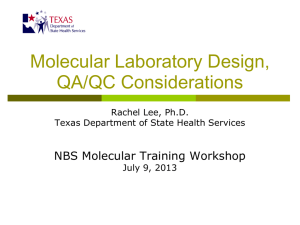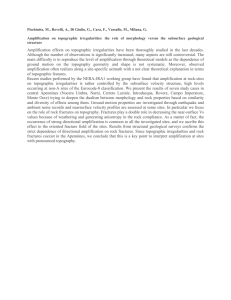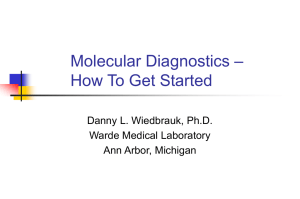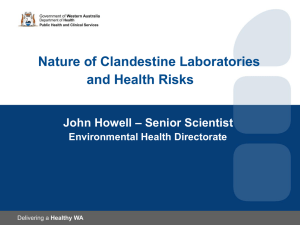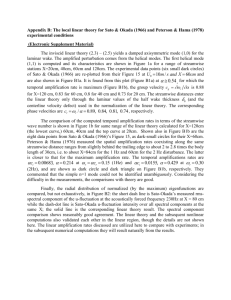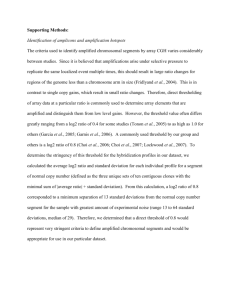Leadership Briefing Outline
advertisement
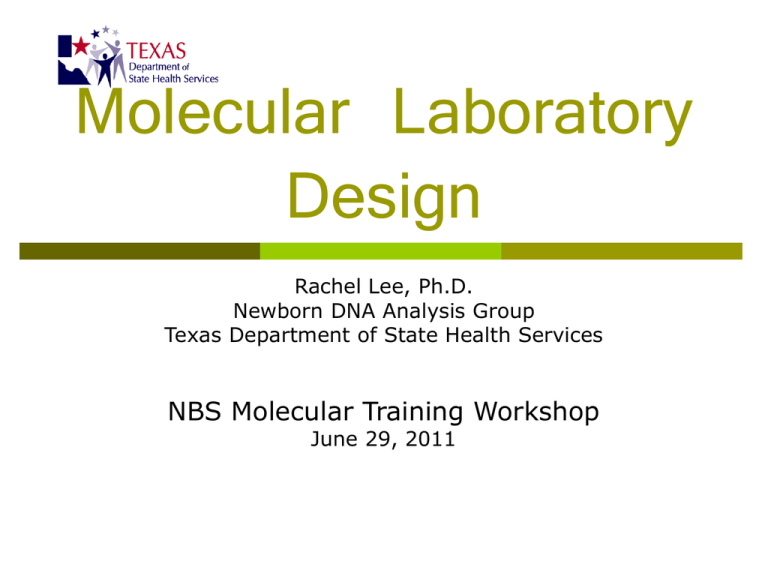
Molecular Laboratory Design Rachel Lee, Ph.D. Newborn DNA Analysis Group Texas Department of State Health Services NBS Molecular Training Workshop June 29, 2011 Potential Sources of Contamination Cross contamination between specimens Amplification product contamination Laboratory surfaces Ventilation ducts Reagents/supplies Hair, skin, saliva, and clothes of lab personnel Setting Up a Molecular Laboratory Mechanical barriers to prevent contamination Spatial separation of pre- and postamplification work areas Area 1 – Reagent preparation Area 2 – Specimen preparation Area 3 – Amplification/product detection Physically separated and, preferably, at a substantial distance from each other Unidirectional Flow Both personnel and specimens Amplification product-free to productrich Remove PPE before leaving one area Avoid or limit reverse direction Reusable supplies in the reverse direction need to be bleached. Features of the 3 Areas Each area has separate sets of equipment and supplies Refrigerator/freezer (manual defrost) Pipettes, tips, tubes, and racks Centrifuge, timers, vortex Lab coat (color-coded), disposable gloves, safety glasses, and other PPE Cleaning supplies Office supplies Ventilation system Dead air box with UV light – serves as a clean bench area Features of the 3 Areas Air pressure Reagent Prep and Specimen Prep – Positive Postamplification - Negative Reagent Prep – Single entrance, reagents used for amplification should not be exposed to other areas Specimen Prep – Specimens should not be exposed to post-amplification work areas Laboratory Design Example Mitchell P. S. et al. Nucleic Acid Amplification Methods: Laboratory Design and Operations, 2004, In “Molecular Microbiology: Diagnostic Principles and Practice, edited by D. H. Persing et al” 99. 85-93. Two Areas Only Area 1 – Reagent prep, specimen prep, and target loading – use of laminar-flow hoods Area 2 – Amplification/product detection Alternative to Spatial Separation Class II biological safety cabinet Dedicated areas for each work phase Unidirectional Automated specimen processing station/closed-tube amplification and detection system Important Details Use of positive displacement pipettes and disposable filtertip pipette tips Avoid production of aerosols when pipetting Use of sterilized single-use plasticware Minimizes the risk of amplicon carry-over on clothing, hair and skin Hairnet Dedicated safety glasses Disposable labcoat/gown Gloves Shoe covers More Important Details Use of nuclease free or autoclaved water Aliquot oligonucleotides – multiple freeze thaws will cause degradation Always include a blank control to check for contamination Wipe test Monthly Detect and localize the contamination Identify the source of the contamination Decontamination Approaches Clean the work area & equipments routinely Clean the PCR workstation at the start and end of each work day/run (UV light, 70% ethanol, fresh 10% sodium hypochlorite, DNA Away) Clean the exterior and interior parts of the pipette Clean the equipment Clean the doorknobs, handle of freezers Other Considerations Temperature and humidity requirements Exhaust ventilation Water quality Back-up power system References • • CLSI MM5-A, Vol 23 (17) Nucleic Acid Amplification Assays for Molecular Hematopathology; Approved Guideline Aslanzadeh J. 2004. Preventing PCR Amplification Carryover Contamination in a Clinical Laboratory. Ann Clin Lab Sci 34(4):389-396.

